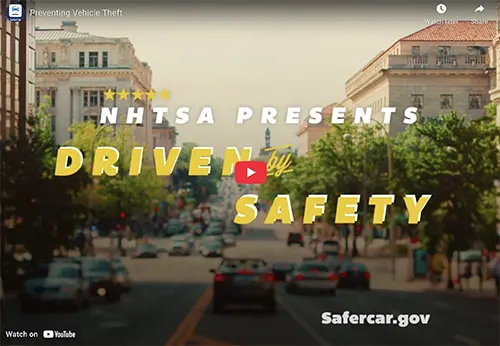Nearly half of all vehicles are stolen because owners neglect a few simple precautions.
Lallis and Higgins Blog
Recent Posts
Archive
- October 2025 (2)
- September 2025 (4)
- August 2025 (4)
- July 2025 (3)
- June 2025 (4)
- May 2025 (3)
- April 2025 (6)
- March 2025 (4)
- February 2025 (4)
- January 2025 (4)
- December 2024 (5)
- November 2024 (4)
- October 2024 (3)
- September 2024 (5)
- August 2024 (4)
- July 2024 (5)
- June 2024 (4)
- May 2024 (5)
- April 2024 (4)
- March 2024 (4)
- February 2024 (4)
- January 2024 (5)
- December 2023 (4)
- November 2023 (4)
- October 2023 (5)
- September 2023 (4)
- August 2023 (4)
- July 2023 (5)
- June 2023 (4)
- May 2023 (5)
- April 2023 (4)
- March 2023 (4)
- February 2023 (4)
- January 2023 (5)
- December 2022 (5)
- November 2022 (4)
- October 2022 (5)
- September 2022 (6)
- August 2022 (4)
- July 2022 (4)
- June 2022 (4)
- May 2022 (5)
- April 2022 (4)
- March 2022 (4)
- February 2022 (4)
- January 2022 (5)
- December 2021 (5)
- November 2021 (5)
- October 2021 (5)
- September 2021 (4)
- August 2021 (5)
- July 2021 (4)
- June 2021 (5)
- May 2021 (4)
- April 2021 (4)
- March 2021 (5)
- February 2021 (5)
- January 2021 (4)
- December 2020 (4)
- November 2020 (6)
- October 2020 (4)
- September 2020 (4)
- August 2020 (4)
- July 2020 (6)
- June 2020 (4)
- May 2020 (5)
- April 2020 (6)
- March 2020 (5)
- February 2020 (4)
- January 2020 (4)
- December 2019 (4)
- November 2019 (4)
- October 2019 (5)
- September 2019 (4)
- August 2019 (2)
- July 2019 (4)
- June 2019 (4)
- May 2019 (5)
- April 2019 (3)
- March 2019 (5)
- February 2019 (3)
- January 2019 (3)
- December 2018 (5)
- November 2018 (4)
- October 2018 (5)
- September 2018 (4)
- August 2018 (4)
- July 2018 (5)
- June 2018 (5)
- May 2018 (5)
- April 2018 (4)
- March 2018 (4)
- February 2018 (4)
- January 2018 (5)
- December 2017 (5)
- November 2017 (3)
- October 2017 (4)
- September 2017 (4)
- August 2017 (5)
- July 2017 (4)
- June 2017 (4)
- May 2017 (5)
- April 2017 (5)
- March 2017 (4)
- February 2017 (5)
- January 2017 (4)
- December 2016 (5)
- November 2016 (2)
- October 2016 (4)
- September 2016 (5)
- August 2016 (5)
- July 2016 (4)
- June 2016 (5)
- May 2016 (1)
- December 2015 (1)
- July 2015 (1)
- December 2014 (1)
- October 2014 (1)
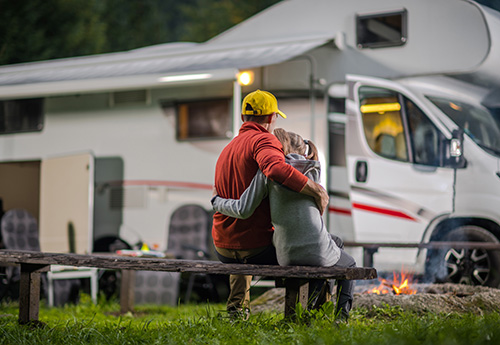
Motorhome Driving Tips

If you have never driven a motorhome before, you may find it to be quite a disorienting and daunting prospect. Driving a motorhome safely is a bit more challenging than driving a smaller vehicle safely. But it is not too hard to learn, and you should adjust relatively quickly.
Following are some tips which can help you get started on the right track for a pleasant and safe motorhome vacation.
1. Be prepared for long, wide turns
The most obvious difference between driving a motorhome and driving a smaller vehicle is that the large size of your vehicle means that you will need to be making long, wide, slow turns.
If you need to make a tight turn, the trick is to do two things:
Put more width between yourself and the obstacle you need to pivot around.
Start your turn earlier rather than later.
That second step may seem counterintuitive, and may make you feel uneasy. But if you watch videos, you can see these principles demonstrated.
If you are ever in any doubt about your ability to make a particular turn, do not do it. If you absolutely must, get someone outside the vehicle to help you.
2. Do not follow other drivers too closely
Because it takes longer to stop a motorhome, you need to make sure that you are putting more distance between yourself and the drivers in front of you. Following closely puts them and you at risk.
3. Be prepared for longer brake times
Even if you have an open road in front of you, you need to keep your longer brake times in mind constantly.
Say for example you are driving down a hill starting at the top. If you start at the same speed you would normally in a car, you will probably be surprised by how fast you are going by the bottom. Start out slower so that your brakes have less to do. Use the appropriate gear as well.
4. Make sure you are centered in your lane
Because a motorhome is also wider than a regular vehicle, it can be difficult at first to gauge your position in your lane. One thing which can help is to stick with driving in the lane closest to the shoulder. That way if you veer too far to the right, at least you will not veer into traffic.
Plus, this is the lane you are expected to drive in if you are going more slowly, which you probably will (and should) be. If there are cars piled up behind you, do use the turnouts. This is courteous to other drivers. It is also safer, since you will then not have angry people trying to pass you. This will reduce tailgating as well.
5. Do not pull into spaces without someone outside to help
If you are trying to park your motorhome, whether in a parking lot or an RV park, you should not attempt to do so entirely on your own.
You need to have somebody outside to help you gauge the distance between the motorhome and other vehicles, as well as how aligned you are with the space.
Even experienced motorhome drivers do this, so as a beginner, there is no excuse not to. If you are traveling by yourself, ask a staff member at the RV park to assist you. Most park staff will not hesitate to help you out.
6. Never make assumptions about clearance
It’s very easy to forget that you are driving a vehicle which is quite a bit taller than you are used to. Always check clearance for tunnels, bridges, petrol stations, and so forth before you proceed in your rented motorhome. This is also something to keep in mind when you are planning your routes.
7. Be aware of the “tail swing”
The construction of motorhomes means that sometimes the front and back of the RV are actually comprised of separate pieces which turn at slightly different rates. This results in a “tail swing” which may be as high as 30 inches.
Be aware of how tail swing can affect the way that your vehicle turns. Compensate for it so that you can make your turns safely.
8. Watch out for wind
When driving a motorhome, your vehicle’s centre of mass is higher off the ground than it would be in a regular car. That means that wind can have more of an impact on your vehicle, causing greater instability.
Winds which a car would be able to handle with little difficulty can be quite problematic for a motorhome driver. So do not make assumptions about what you will be able to deal with. If the wind is giving you trouble, just pull over until it passes.
8. Use Caution and Common Sense When Driving Your Hired Motorhome
You now have some important tips to help you out while you are learning to drive the motorhome you hire for your next vacation. Take it slow, and do not be afraid to pull over when you need to. You should get the hang of it pretty quickly, and will be able to enjoy a safe and smooth motorhome experience.
Source: campervanfinder.com

Fourth of July Fireworks Guide: Where to Watch in MA

You could see fireworks every night for a week in MA
To watch the holiday’s fireworks shows done safely and professionally, here is where you can go to see them from Tuesday, July 1, through Sunday, July 6.
Tuesday:
- Haverhill: Fireworks will start at 9:15 p.m. at Riverside Park at 163 Lincoln Ave.
- Stoughton: Fireworks begin at 9 p.m. at the Stoughton High School field at 232 Pearl St.
- Worcester: Fireworks will start at 9 p.m. at the Worcester Community School’s athletic field at 170 Belmont St.
Wednesday:
- Boston: Fireworks begin at 9 p.m. at the barge off Long Wharf at 66 Long Wharf.
- Chatham: Fireworks will start at dusk (9 p.m.) at Veteran’s Field at 150 Depot Road.
- Cohasset: Fireworks will start at 9:15 p.m. at the barge off Sandy Beach at 345 Atlantic Ave.
- Foxborough: Fireworks will set off at 9 p.m. at Parking Lot 51 at Patriot Place at 2 Patriot Place.
- Lexington: Fireworks begin at 9:30 p.m. at the Lexington High School football field at 112 Worthen Road.
- Mashpee: Fireworks begin at 9 p.m. at the golf course at 2 Red Brook Road, near the New Seabury Country Club.
- Orleans: Fireworks will start at 9:15 p.m. at the barge off Rock Harbor Beach at 11 Bay View Drive.
Thursday:
- Andover: Fireworks begin at 9:20 p.m. at Andover High School at 80 Shawsheen Road.
- Attleborough: Fireworks will start at 9 p.m. at Hayward Field at 73 North Ave.
- Fitchburg: Fireworks will kick off at 9 p.m. at 46 Pratt Road.
- Freetown: Fireworks will start at 9 p.m. at the Assonet Burying Ground on South Main Street.
- Gloucester: Fireworks will start at 9:30 p.m. at Stage Fort Park at 1 Hough Ave.
- Hadley: Fireworks will start at 9:15 p.m. at the Warrent McGuirk Alumni Stadium at 300 Stadium Drive.
- Lawrence: Fireworks begin at 9:30 p.m. at the field across from Lawrence High School, at 71 North Parish Road.
- Lynn: Fireworks begin at 9 p.m. at the barge near Red Rock at 76 Marine Blvd.
- Mashpee: Fireworks start at 9:15 p.m. at the golf course at 130 Willowbend Drive.
- Mattapoisett: Fireworks will start at 9 p.m. at the golf course driving range at 63 County Road.
- Needham: Fireworks begin at 9:30 p.m. at the Needham High School parking lot at 609 Webster St.
- New Bedford: Fireworks begin at 9 p.m. at the barge in New Bedford Harbor at
- Pittsfield: Fireworks will start at 9 p.m. at Camp Winadu at 700 Churchill St.
- Randolph: Fireworks begin at 9:30 p.m. at the Randolph High School baseball field at 70 Memorial Parkway.
- Rutland: Fireworks will start at 9:30 p.m. behind the ballpark at Marsh Field at 17 Pommogussett Road.
- Sharon: Fireworks will start at 9:30 p.m. at the barge on Lake Massapoag at 196 Pond St.
- South Deerfield: Fireworks begin at 8:45 p.m. at the open field at Tree House Brewing at 1 Community Place.
- South Hadley: Fireworks will start at 9:30 p.m. at Michael E. Smith Middle School at 100 Mosier St.
- Tewksbury: Fireworks will start at 9:30 p.m. near the Saunders Recreational Area at 286 Livingston St.
- Walpole: Fireworks will start at 9:30 p.m. at Joe Morgan Field at 220 School St.
- Webster: Fireworks begin at 9 p.m. at Memorial Beach near Thompson Road.
- Weymouth: Fireworks will start at 9:15 p.m. at the barge off Wessagusett Beach.
- Worcester: Fireworks begin at 9 a.m. at Institute Park at 82 Salisbury St.
- Fireworks will also go off during the post-game in the outfield at Polar Park, at 100 Madison St.
Friday:
- Acton: Fireworks will start at 9:30 p.m. behind Nara Park at 25 Ledge Rock Way.
- Agawam: Fireworks will start at 9:30 p.m. at Picnic Grove at Six Flags New England at 1623 Main St.
- Amesbury: Fireworks will start at 9:30 p.m. at Woodsom Farm at 223 Lions Mouth Road.
- Bellingham: Fireworks begin at 9 p.m. at Bellingham High School at 60 Blackstone St.
- Beverly: Fireworks will start at 9:15 p.m. at the barge near West Beach at 121 West St.
- Boston: Fireworks will start at 9:40 p.m. off five barges in the Charles River.
- Bridgewater: Fireworks will start at 9:30 p.m. at Legion Field Bridgewater, behind Williams Intermediate School at 200 South St.
- Edgartown: Fireworks will start at 9:15 p.m. at Edgartown Harbor at 1 Morse St.
- Fall River: Fireworks begin at 9:30 p.m. off the barge in the Taunton River at 1338 Davol St.
- Falmouth: Fireworks begin at 9 p.m. off the barge at Falmouth Beach on Gifford Street.
- Greenfield: Fireworks kick off at 9:20 p.m. at Franklin County Fairgrounds at 89 Wisdom Way.
- Harwich: Fireworks will start at 9:15 p.m. off three barges near Wequassett Resort & Golf Club at 2173 MA-28.
- Lowell: Fireworks begin at 9 p.m. from the pedestrian walkway on the Aiken Street Bridge.
- Marblehead: Fireworks will start at 9:15 p.m. off the barge in Marblehead Harbor, near the Commercial Street Wharf.
- Nahant: Fireworks will start at 9 p.m. at Bailey’s Point Park near Bass Point Road.
- Nantucket: Fireworks will start at 9 p.m. off the barge near Jetties Beach.
- Newton: Fireworks begin at 9:30 p.m. at Albemarle Field at 250 Albemarle Road.
- North Adams: Fireworks begin at 9:15 p.m. at 400 Curran Highway.
- Pittsfield: Fireworks begin at 9 p.m. at Wahcona Park at 105 Wahcona St.
- Plymouth: Fireworks begin at 9:30 p.m. off three barges in Plymouth Harbor.
- Provincetown: Fireworks will start at 9 p.m. at MacMillian Pier at 24 MacMillian Wharf.
- Salem: Fireworks kick off at 9 p.m. at Derby Wharf at 160 Derby St.
- Springfield: Fireworks will start at 9:30 p.m. at the Memorial Bridge.
- Wakefield: Fireworks will start at 9:30 p.m. at the end of Beacon Street.
- Williamstown: Fireworks will start at 9:15 p.m. at 215 South St. near the Clark Art Institute.
- Winthrop: Fireworks will start at 9:20 p.m. at Coughlin Park at 31 Bay View Ave.
- Worcester: Fireworks begin during the post-game in the outfield at Polar Park, at 100 Madison St.
Saturday:
- Agawam: Fireworks will start at 9:30 p.m. at Picnic Grove at Six Flags New England at 1623 Main St.
- Charlton: Fireworks begin at 9:15 p.m. at Tree House Brewing Co. at 129 Sturbridge Rd.
- East Brookfield: Fireworks will start at 9:15 p.m. at the landfill on Connie Mack Drive.
- Franklin: Fireworks begin at 10 p.m. at Franklin High School at 218 Oak St.
- Greenfield: Fireworks begin at 9:35 p.m. at Poet’s Seat Tower on Mountain Road.
- Methuen: Fireworks begin at 9:30 p.m. at the off-ramp at Exit 4 at Route 213.
- Middleborough: Fireworks begin at 10 p.m. at Battis Field/Pierce Playground on Jackson Street.
- Milford: Fireworks will start at 9 p.m. at Clark Island.
- Osterville: Fireworks will start at 9:30 p.m. off two barges in Tims Cove on Cove Lane.
- Salisbury: Fireworks kick off at 10:15 p.m. at Salisbury Beach.
- Wrentham: Fireworks will start at 9 p.m. off the barge in Lake Pond at 41 Woodford Road.
Sunday:
- North Andover: Fireworks begin at 9:30 p.m. at Hayes Stadium at North Andover Middle School at 495 Main St.
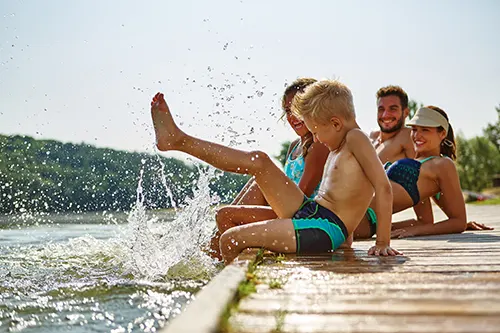
Benefits of Swimming!

Swimming is one of the most popular sports. As well as being fun, swimming is a great way to keep fit, stay healthy and make friends.
Swimming is a healthy activity that you can continue for a lifetime. It is a low-impact activity that has many physical and mental health benefits.
Swimming for recreation
Swimming is a great recreational activity for people of all ages. Recreational swimming can provide you with a low-impact workout and it's a good way to relax and feel good.
Health benefits of swimming
Swimming is a great workout because you need to move your whole body against the resistance of the water.
Swimming is a good all-round activity because it:
- keeps your heart rate up but takes some of the impact stress off your body
- builds endurance, muscle strength and cardiovascular fitness
- helps you maintain a healthy weight, healthy heart and lungs
- tones muscles and builds strength
- provides an all-over body workout, as nearly all of your muscles are used during swimming.
Other benefits of swimming
Swimming has many other benefits including:
- being a relaxing and peaceful form of exercise
- alleviating stress
- improving coordination, balance and posture
- improving flexibility
- providing good low-impact therapy for some injuries and conditions
- providing a pleasant way to cool down on a hot day
- being available in many places – you can swim in swimming pools, beaches, lakes, dams and rivers. Make sure that the environment you choose to swim in is safe.
Getting started with swimming
Getting started in swimming is easy. It is a sport for all age groups, skill and fitness levels. Before you get started, you will need to purchase a pair of swimmers and some goggles.
Source: Betterhealth.vic

Home Safety Checklist

Homes can have many hidden hazards that could be harmful to anyone – from babies to seniors. Thirty-three million people are injured by consumer products in the home each year, but most of these injuries are avoidable, so practicing prevention and hazard-proofing homes can save lives.
The following recommendations to help you and your family stay safe.
Safety Tips for Any Home
- Keep emergency numbers on every phone; include fire, police, your doctor(s), ambulance service and the poison control hotline (1-800-222-1222).
- Make sure your house number is visible from the street.
- Install smoke detectors and carbon monoxide detectors on every floor. Change batteries twice a year when you change your clocks for daylight savings time.
- Eliminate clutter. Keep stairways and walkways clear of tripping hazards.
- Have regular inspections for your furnaces, hot water heaters and other gas appliances, as well as chimneys and flues.
- Never use kerosene or gas space heaters in unvented rooms, and never keep cars, motorcycles or lawn mowers running in a closed or attached garage.
- Be cautious when using ladders. Inspect for loose or worn parts. Use only on stable, level ground, and don’t overreach.
- Wear protective footwear and eyewear when mowing the lawn.
- Wear protective eyewear when operating power tools.
- Install decorative markers on glass doors so that people do not walk into them by mistake.
- Consider having a telephone connected to a land-line because cell phones run out of power, and their service may be interrupted in an emergency situation.
Home Safety Checklist for Children
According to the Consumer Product Safety Commission, approximately 4.5 million children are injured by hazards in the home each year. Parents should teach their children about safety at home, at school, on the playground and while traveling. This includes knowing their address and how to call 9-1-1. Never leave young children unattended. Cover all unused electrical sockets and keep electrical cords out of children’s reach.
- Install protective padding on the corners of furniture with sharp edges.
- Use safety latches and locks on cabinets and drawers.
- Protect children from dangerous areas. Install safety gates at the tops and bottoms of stairways. Place guards on banisters and railings if your child can fit through the rails.
- Secure tall bookcases, televisions, or other pieces that might tip over.
- Use window guards and safety netting to help prevent falls from windows, balconies and landings. (If window guards are used, ensure that at least one window in each room can easily be used as an exit in case of fire.)
- Tie up vertical blind cords.
- Install doorknob covers on entry doors so small children can’t leave the house unattended.
- Use nightlights, but keep the small plastic bulbs out of reach of children.
- Remove rubber tips from door stops, so children cannot choke on them, or install one-piece doorstops.
- Pay attention to all equipment recalls, including those for “hand-me-downs.”
- Store drugs and chemicals, such as cleaning products and bleach, out of reach and in their original containers to ensure proper knowledge of contents.
- Buy medicines, vitamins and household products with child-resistant caps.
- Keep toys with small parts (and other small objects) out of the reach of toddlers and young children. If the object can fit easily into the cardboard center of a roll of toilet tissue, the object can pose a choking hazard.
- If you own any firearms, always store unloaded and locked. Firearms and ammunition should be stored separately.
- Remove any houseplants from children’s reach.
Source: emergencyphysicians.org

Tips for Golfing in Warm Weather

If you're a golf lover, there's no off-season when it comes to getting out on the course. But to play your best year-round, it's important to stay physically and mentally prepared for whatever the weather brings. From hot summer days to cooler winter mornings, adjusting your approach each season can help keep your game strong.
While some people shy away from playing golf in the heat of the summer, others take advantage and go out as usual. This is because they prepare for the season. Here are tips on playing golf in hot weather.
Drink Enough Fluids
Staying hydrated is essential for playing your best, especially in warm weather. Start drinking water a few hours before tee time, and keep a bottle with you to sip throughout your round. Staying ahead of dehydration helps you stay energized and focused. And while a drink might be tempting, remember—alcohol can dehydrate you, so water is always the better choice on the course.
Wear Light, Breathable Clothing
Wearing loose, lightweight clothing is key to staying cool and comfortable on the course. Opt for breathable fabrics like cotton or moisture-wicking materials designed for sun protection. Long-sleeve shirts and pants can shield your skin from harmful rays, and many brands now offer golf apparel with built-in SPF for added coverage without sacrificing comfort.
Wear Sunscreen
Wearing sunscreen is essential for protecting your skin during long hours on the course. Choose a broad-spectrum sunscreen with at least SPF 30 and apply it generously to all exposed areas—don’t forget your ears, neck, and the back of your hands. Look for sweat-resistant formulas designed for sports to ensure lasting coverage, and reapply every couple of hours to stay protected without compromising your game.
Eat Lighter, Healthy Meals
Eating light and healthy meals will help you retain adequate energy for golfing. However, be sure to avoid overeating because you will feel heavy and sluggish. It is also best to eat earlier, probably a few hours before golfing. Opt for foods that are high in water content, such as fruits and vegetables, and avoid sugary or caffeinated beverages, which can dehydrate you. You can also pack some snacks, such as granola bars or trail mix, to keep your energy levels up throughout the game.

Should You Invest in a Condo?

Condos, or condominiums, are residential units in larger complexes where you own your living space and share common areas. There are many advantages to condo living, and depending on the market and your circumstances, they can be great investments. Let’s explore what a condo is, how ownership works, and the benefits of condo living.
Condos and Their Investment Potential at a Glance
- A condominium, or condo, is a property arrangement that combines individual unit ownership with shared ownership of common areas, distinct from rental apartments.
- Condo ownership includes exclusive rights to the unit’s interior while sharing responsibilities for maintaining common areas, typically managed by a homeowners’ association (HOA).
- Condo living offers reduced maintenance, access to community amenities, and enhanced security, making them appealing for personal residence.
- Renting out a condo can provide positive cash flow and cover mortgage payments for the property, allowing the owner to build equity.
Defining a Condo
At its core, a condo is a property arrangement where a building or a group of buildings is divided into several individually owned units that share common areas, including the potential for future condominium development. Picture a large property complex where different individuals own each unit, but the hallways, recreational facilities, and other amenities are shared among all residents.
A key feature distinguishing condos from other housing types is the blend of individual and collective ownership. Each condo owner has exclusive rights to their own unit, much like owning a single-family home. However, they also share ownership and responsibility for the common areas and amenities with other condo owners.
Condos and apartments differ significantly. While both may look similar, condos are individually owned units, whereas a property management company typically rents apartments. This distinction affects maintenance responsibilities and the sense of community.
Source: portlandrealestate.com
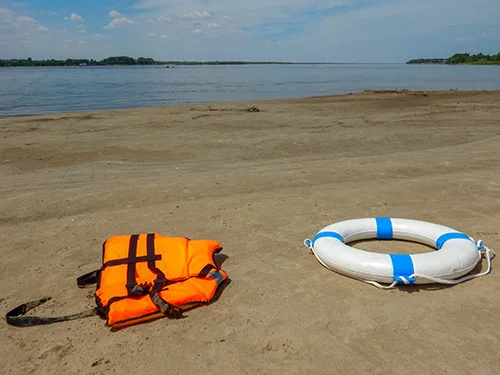
Things to Know About Water Safety

Ensure every member of your family learns to swim so they at least achieve skills of water competency: able to enter the water, get a breath, stay afloat, change position, swim a distance then get out of the water safely.
Employ layers of protection including barriers to prevent access to water, life jackets, and close supervision of children to prevent drowning.
Know what to do in a water emergency – including how to help someone in trouble in the water safely, call for emergency help and CPR.
What Does It Mean to Be Water Competent?
Water competency is a way of improving water safety for yourself and those around you through avoiding common dangers, developing fundamental water safety skills to make you safer in and around the water, and knowing how to prevent and respond to drowning emergencies. Water competency has 3 main components: water smarts, swimming skills and helping others.
Water Smarts
Take these sensible precautions when you’re around water (even if you’re not planning to swim):
- Know your limitations, including physical fitness, medical conditions.
- Never swim alone; swim with lifeguards and/or water watchers present.
- Wear a U.S. Coast Guard-approved life jacket appropriate for your weight and size and the water activity. Always wear a life jacket while boating, regardless of swimming skill.
- Swim sober.
- Understand the dangers of hyperventilation and hypoxic blackout.
- Know how to call for help.
- Understand and adjust for the unique risks of the water environment you are in, such as:
- River currents.
- Ocean rip currents.
- Water temperature.
- Shallow or unclear water.
- Underwater hazards, such as vegetation and animals.
Swimming Skills
Learn how to perform these 5 skills in every type of water environment that you may encounter (such as in home pools, oceans, lakes, rivers and streams):
- Enter water that’s over your head, then return to the surface.
- Float or tread water for at least 1 minute.
- Turn over and turn around in the water.
- Swim at least 25 yards.
- Exit the water.
Helping Others
These actions will help your family avoid emergencies – and help you respond if an emergency occurs:
- Paying close attention to children or weak swimmers you are supervising in or near water.
- Knowing the signs that someone is drowning.
- Knowing ways to safely assist a drowning person, such as “reach or throw, don’t go”.
- Knowing CPR and first aid.

The Many Health Benefits of Gratitude

Saying thank you is nothing new. But practicing gratitude — regularly focusing on the positive parts of your life — is about more than having good manners. It can be a powerful health habit.
Research shows that practicing gratitude — 15 minutes a day, five days a week — for at least six weeks can enhance mental wellness and possibly promote a lasting change in perspective. Gratitude and its mental health benefits can also positively affect your physical health.
Health benefits of being thankful
You’ll get the biggest health benefits of gratitude when it becomes habitual and part of your thought process. But even allotting some time each day or week to prioritize gratitude can be beneficial.
Reduce depression
A review of 70 studies that include responses from more than 26,000 people found an association between higher levels of gratitude and lower levels of depression. But more research needs to be done to understand the association.
Gratitude seems to reduce depression symptoms — people with a grateful mindset report higher satisfaction with life, strong social relationships and more self-esteem than those who don’t practice gratitude. But it’s also possible that depressed people are less likely to practice gratitude. Most likely, there’s a continuous relationship where gratitude lessens symptoms of depression, allowing people to recognize what they have.
Lessen anxiety
Anxiety often involves worrying and negative thinking — typically about things that happened in the past or may occur in the future.
Gratitude can be a coping tool for anxiety. Regularly practicing gratitude combats negative thinking patterns by keeping thoughts focused on the present. If you find yourself focusing on negative thoughts about the past or future, challenge yourself to find something you are grateful for now. It will break the negative thought process and return you to the present.
Support heart health
Many benefits of gratitude also support heart health. Improving depression symptoms, sleep, diet and exercise reduces the risk of heart disease. Several studies show that a grateful mindset positively affects biomarkers associated with the risk for heart disease.
A 2021 review of research also finds that keeping a gratitude journal can cause a significant drop in diastolic blood pressure — the force your heart exerts between beats. Having grateful thoughts, even if you don’t write them down, also helps your heart by slowing and regulating your breathing to synchronize with your heartbeat.
Relieve stress
Stress triggers a fight-or-flight response in your nervous system — your heart beats faster, muscles contract and adrenaline pumps. But gratitude can help calm the nervous system.
Taking a moment to be thankful causes physiological changes in your body that initiate the parasympathetic nervous system — the part of your nervous system that helps you rest and digest. Gratitude and the response it causes help bring down your blood pressure, heart rate and breathing to help with overall relaxation.
Improve sleep
People with an attitude of gratitude tend to pursue goals that keep them feeling good — a positive attitude promotes positive action. They engage in activities that support healthy sleep, such as eating well and exercising regularly. Practicing gratitude also makes you less likely to be stressed, anxious or depressed — three factors that affect sleep quality and duration.
But what you do during the day isn’t the only factor in sleeping well. Thinking positive thoughts before falling asleep promotes better sleep — and there’s evidence that gratitude causes people to have positive thoughts about their life, social support and social situations.
Source: uclahealth.org
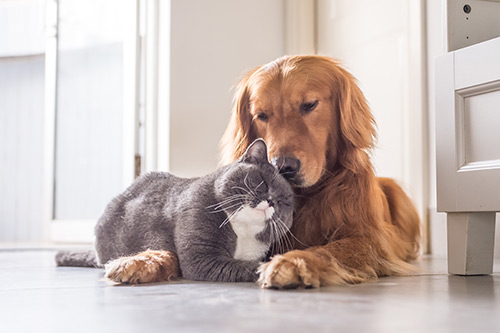
National Pet Month!

May is national pet month, below is a list of the most popular pets in 2025. The list may surprise you!
Pets can come in all different shapes and sizes. According to Forbes, here are the most popular ones in the United States in 2025...
Saltwater fish - Number of U.S. households (millions): 2.2M
Horse - Number of U.S. households (millions): 2.2M
Reptile - Number of U.S. households (millions): 6M
Bird - Number of U.S. households (millions): 6.1M
Small animal (like Hamsters, gerbils, rabbits, guinea pigs, ferrets, etc.) - Number of U.S. households (millions): 6.7M
Freshwater fish - Number of U.S. households (millions): 11.1M
Cat - Number of U.S. households (millions): 46.5M
Dog - Number of U.S. households (millions): 65.1M
Need pet insurance? Call Lallis & Higgins Insurance.
Source: yahoo.com
